Steph W. from SEOPressor


...help you check your website and tell you exactly how to rank higher?


89
score %
SEO Score

Found us from search engine?
We rank high, you can too.
SEOPressor helps you to optimize your on-page SEO for higher & improved search ranking.
By vivian on December 27, 2019

If, as they say, content is King, then consistency offers you the keys to the castle.
Being consistent in both the frequency and quality of your output is the only way to develop an audience that will want to follow your work.
Having a content marketing plan will enable you to build a loyal fan base who will trust you when it comes to the products you create or endorse. It will ensure that when the time comes for you to spread the word, you will have people willing to help you do it.
What’s more, when you establish yourself as a reliable, authoritative presence online, it will open up unexpected opportunities for your business. People discover you while looking for their next big thing, and see you as an expert.
Sound good? Then remember, consistency is how you get all that.
So how do you get consistency?
This mostly boils down to discipline, and there are a few minimum values you should aspire to:
Want an example? Look no further than Neil Patel.
Neil publishes around three times a week. Every time, it’s a compelling article filled with research and data, and almost always with some actionable advice and recommendations to readers. Every article receives hundreds of comments from people highly engaged with his blog, active discussing his work with him.
He’s a busy, top level online marketing consultant. How does he find the time to write so much?
We’re back to discipline again. But let me break it down for you a little further. Discipline boils down to three content marketing best practices:
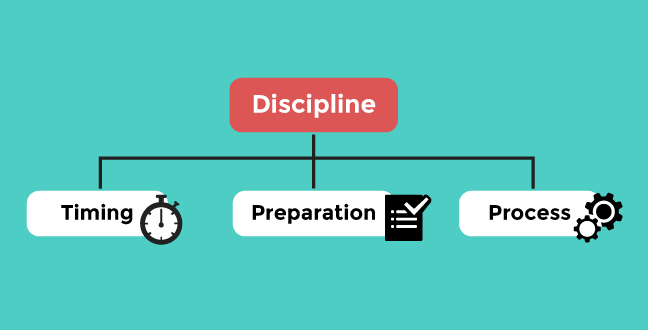
If you have time to do something, you’re prepared to do it, and you have a process to follow, you remove most of the roadblocks in your way. All that remains is the will to get the job done. If you don’t have that, you should be doing something else.
This is a content marketing strategy on the micro-scale. How to nail a single blog post. How to nail every single blog post.
Below are some ideas to help you master the discipline of regularly writing high-quality articles. These ideas will help you avoid some of the common pitfalls, and inspire you by making the most challenging aspects easier.
Writing is hard. No one is going to deny that. Especially not writers.
Most people working on content marketing aren’t writers first and foremost, but people with their own business ideas, expertise, and products that they want to produce. For you, writing will be even harder. Which is why you need to do everything you can to make it easier.
The biggest difference you can make is to set aside writing time in your schedule.
You’ll want a two-hour window, minimum, that is set aside, every day, for your writing.
Remember, it is as important to stop writing after two hours as it is to start when that time begins. Only then will you be able to compartmentalize this part of your day and get that consistency we’ve been talking about.
So, for instance, make 08:00-10.00am your daily writing time. Build the habit. What you write at first is less important: the important thing is to get your body and mind into the habit of writing. The quality will come in time. Don’t put too much pressure on yourself too soon.
Once you have your habit established, then you can use the time you now always set aside to focus on quality.
If you break away from this habit to focus on something else for a few days, you’ll find it even harder to get back to writing, and for fear that difficulty, stop altogether. Just like diet, exercise, or anything else that’s good for you. It requires patience and sacrifice.
To help you keep to this rigorous ideal, consider these factors:
Half the difficulty is in getting people conditioned to multi-tasking to focus just on one thing. But if you use this time wisely, you can edit one article then start another inside your two-hour block, so you can make your time work harder, without getting yourself bogged down.
Having a productive content marketing plan means diversifying the time effectively, not just mashing keys relentlessly for two hours every day.
Plenty of content goes into creating a successful content marketing campaign. While blog posts might be the jewel in the crown, newsletters, sales pages, email funnels, video scripts, product descriptions, and more are all vital pieces of writing to get right. If you’re struggling on a blog, take some of that time for one of your other content endeavors. Just keep writing!
The most difficult part of writing for many can be finding things to write about. What those same people probably don’t appreciate is that the writers they admire have the same problem. Idea generation is a huge, important, and investment-heavy part of the process.
As such, you need to set aside time to come up with your ideas, in much the same way you need to set aside time to write them.
Depending on the kind of person you are and the kind of schedule you have, it can be easier to do this in one of two ways.
Every day when you read something on the news, when you face a new challenge in your business, when you experience a success when you enjoy watching a film, you will get ideas.
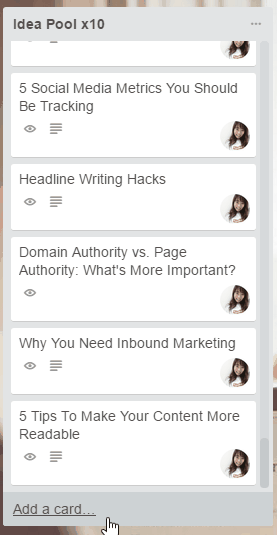
Write those ideas down.
The difference between writers and everyone else is simply that writers record the ideas that flit momentarily through their heads, where others simply forget them or lose them.
Important: this can’t factor into your writing time. That’s for writing, not thinking.
If you’re more project oriented, you may wish to set aside a day a week, or depend on how successful you are, a day every two weeks, just to generate ideas. Don’t judge the ideas at the time, just get them all down. From that session, you should have weeks of potential content.
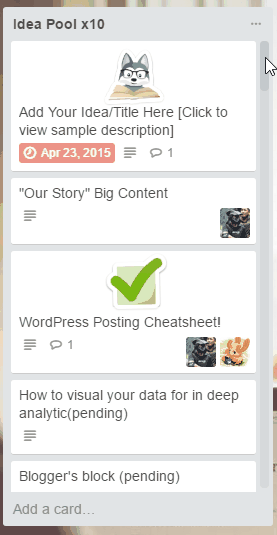
Just take the best ideas from that pile, the ones that really get you excited, and bin the rest.
Start again the next session. Louis CK credits his stand-up comedy with this approach of taking the best, binning the rest, and starting from scratch as the reason why he consistently leveled up and became famous.
Now we’ve established the right culture and attitude toward writing, we have to get on with the writing itself. Fortunately, once the rest is done, this bit is surprisingly straight forward.
Here’s a project map that can help you tick it off stage by stage, and make sure you’re taking the right steps.
We touched on this during idea generation. The difference now is that you have to pick one and commit yourself to it fully. If you tried out our advice from before, and you still didn’t manage to come up with compelling topics, then don’t fear. You can use:
i) Search Engine Journal‘s toolbox section.

ii) Search Engine Land‘s news roundup.

iii) Medium‘s current affairs and featured posts to see what’s current and find some inspiration.

Once you’ve decided on what your topic will be, the most important work you can do is creating a thorough outline on the post you’re about to write.
A detailed outline may feel like a lot of work up front, but ‘scanning’ your own content and pre-seeding the references you want to use, as well as the journey you want to take readers on, will help you save a lot of time when you come to actually writing.
With this preparation done, you can fire the starting gun and run straight for the finish line, instead of getting lost and stopping to ask for directions on the way.
A good outline will:
Finally, a good article will include examples drawn from both your research and your own experiences. It will include pictures that bring those ideas to life and provide moments of clarity and levity. It will include a constant sense of return to the core point at hand.
When all this is done, you’ll have the best version of your article.
I’m separating this into a different point because it’s amazing how often people skip this step, thinking they already know what they want to say, or that they’re the only authority they want to be referencing. Let me be clear: this won’t fly.
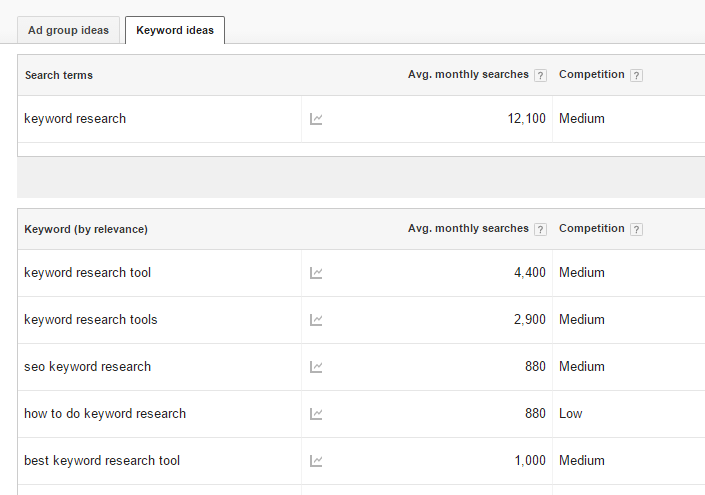
Even if you’re doing content marketing, you still have to do a keyword research on which keywords have higher searches.
Having authority that is derived from simply stating things as fact will no longer hold sway with large parts of your audience. You have to back up your claims, and that means finding material online that support you with evidence.
Basing things on data and research and not on flights of fancy takes longer, sure, but it makes you look far more like an authority than if you just make bold statements with nothing to back them up.
Sounds simple enough right?
Well, guess what, it is! Writing the first draft really is the easy part. Take the pressure off yourself and enjoy the process. Let your curiosity off the leash (within the confines of your outline) and get expressive. Inject a heavy dose of personality. This is the best part of writing, so enjoy it.
Have fun with that? Good. Fun time’s over! Unfortunately, once you’ve done the first draft, you’re far from done.
Get your first draft open. Open a new document. Now, copy and paste each paragraph into the new document, one at a time. Seeing it on a fresh page, devoid of context, will let you know how well the paragraph is functioning in its own right.
If you have any questions about the paragraph, write them down and answer them. Put those answers into the paragraph. Now it’s doing what it’s supposed to do. Copy it back into your original article then do the next one.
Once you’ve done that, pass it through an app like Grammarly or Hemingway.

Grammarly helps to make sure you get your reading comprehension level right, avoid long sticky sentences, and cover basic typos.
Finally, read it aloud. You won’t understand how your article flows until you try to do this. In truth, we don’t really ‘read’ in a separate way to how we hear. Reading conjures the sound of the words in our imagination. As such, reading it aloud will tell you how easy it is to understand the first time around.
What, STILL not done? I’m afraid not! Even after a full redraft for sense, spelling, clarity and reading level, you aren’t to the finish line yet. You need to embroider your piece with the stuff that will bring it to life, and bring you the best results.
First off, the headline. We have numerous articles about creating catchy headlines. This should give you an idea of how important they are. You need to get your headline right the first time.
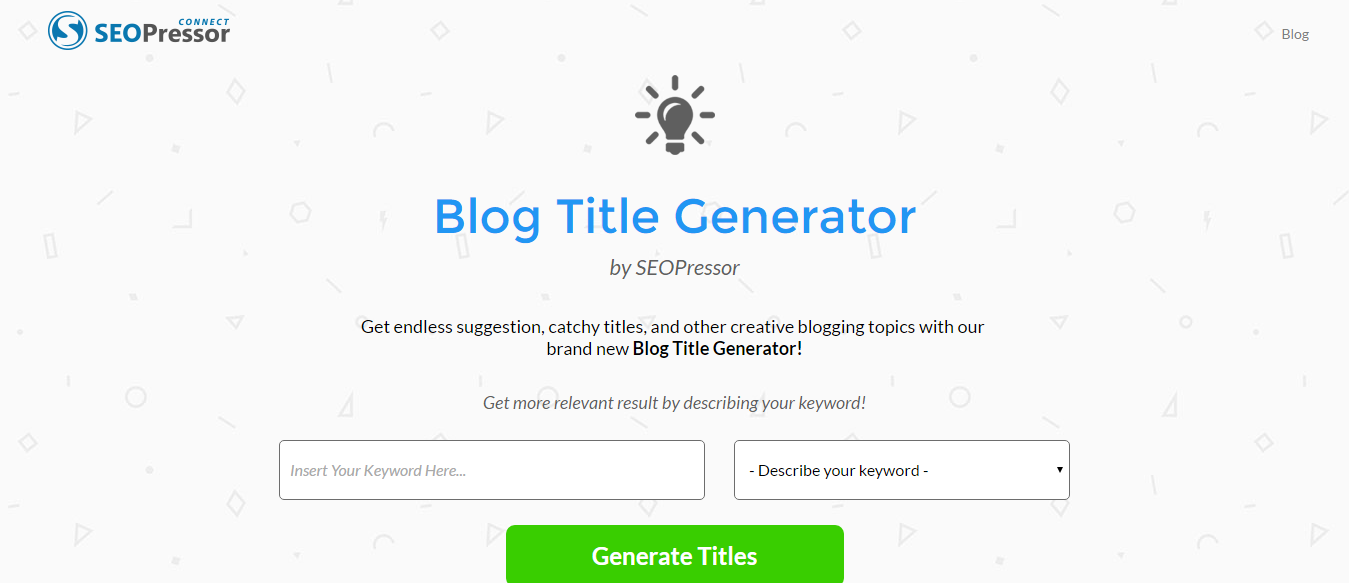
Use our Blog Title Generator to come up with ideas for headlines that will offer high performance both for algorithms and for your readers.
Next, pick a feature image. This will show up when you share the article on social media.
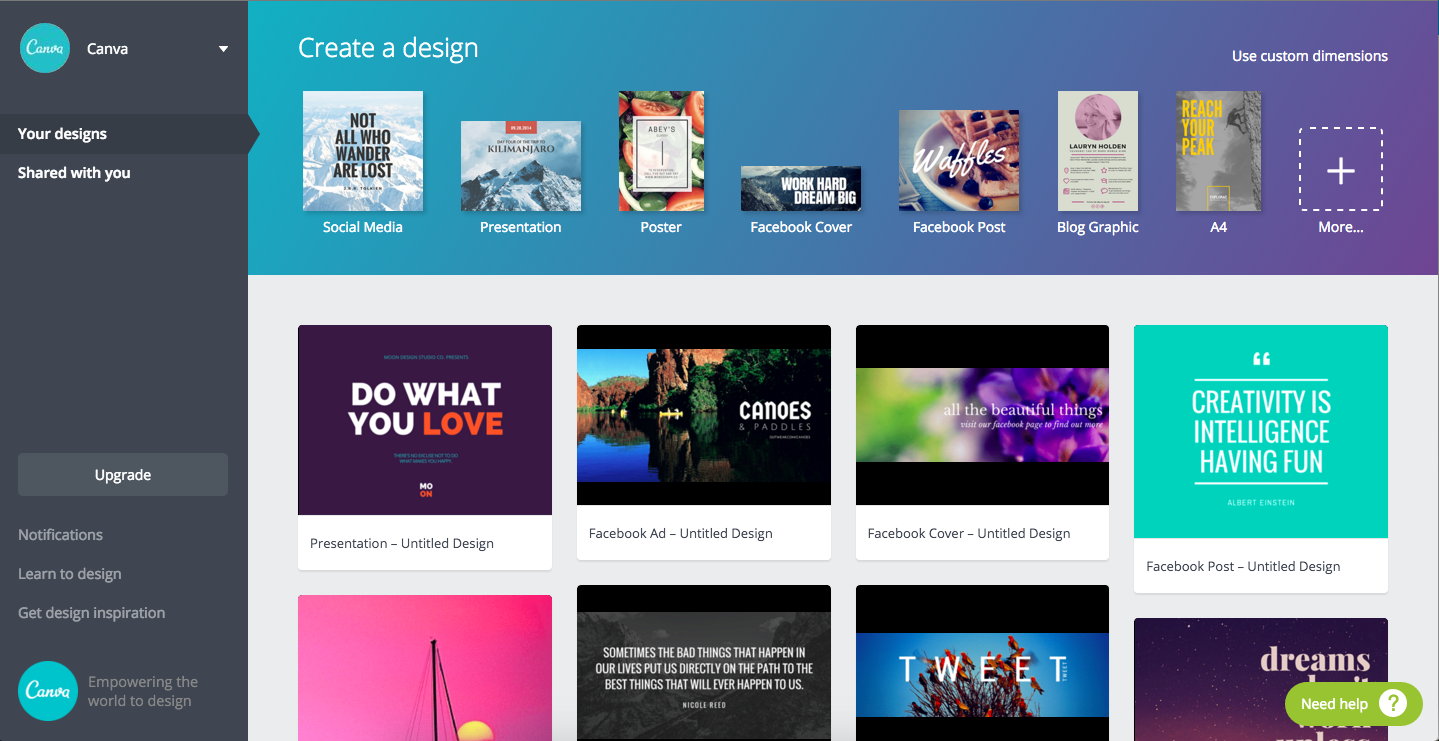
Using basic image editing tools like Canva, you can put your blog title, or a key excerpt, onto the featured image.
This will get people reading and make them far more likely to click. Knowing how to optimize your article for social media is essential to its success.
Next, consider if you can create an associated Content Upgrade. This is something real that people can take away from the article and use in their broader life, without having to navigate back to the site each time. This branded item will, however, sit on their desk and remind them where they got it from, and where they should go for future advice. Neat!
Finally, craft your call to action. A call to action is directly instructing your reader to do the thing you brought them here to do in the first place. It should be directly related to your content and your products or services, and help bridge a gap for people in a process they are undertaking. We have a whole article dedicated to perfecting your call to action, so check it out if you’re unsure.
I just talked about hammering in your call to action. Well here’s mine. You’ve come this far, now don’t let your article’s success be ruined by lack of discovery. Use SEOPressor when you upload your draft to WordPress. Aim to get as many green lights as possible.
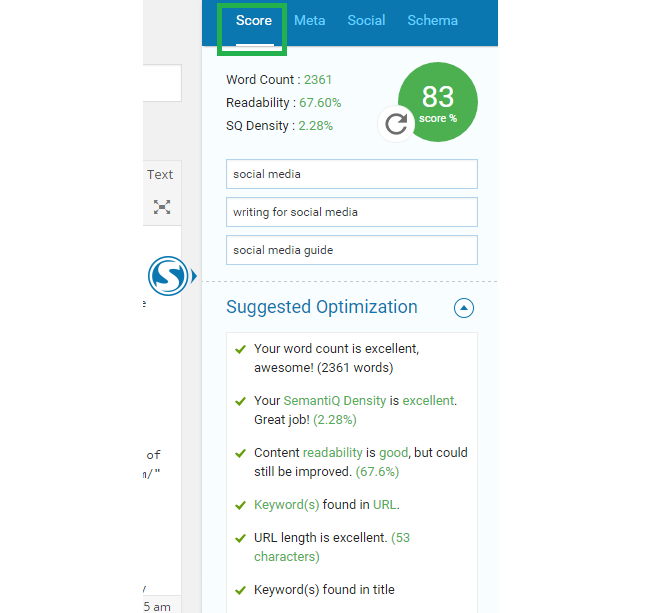
When all your lights are green, you know your article is perfectly optimized for search engines and organic traffic.
We’ve gamified SEO to make it easy, intuitive, and effective for everyday bloggers and maestros alike. Get it now.

Boom! You have a high quality, high-performance piece of content through which to market to new and existing audiences alike. High five!
I get it. It’s always a lot easier to give advice than to take it. There’s a lot of it here, too, so how can you possibly get it all right?
Tools are your friend.
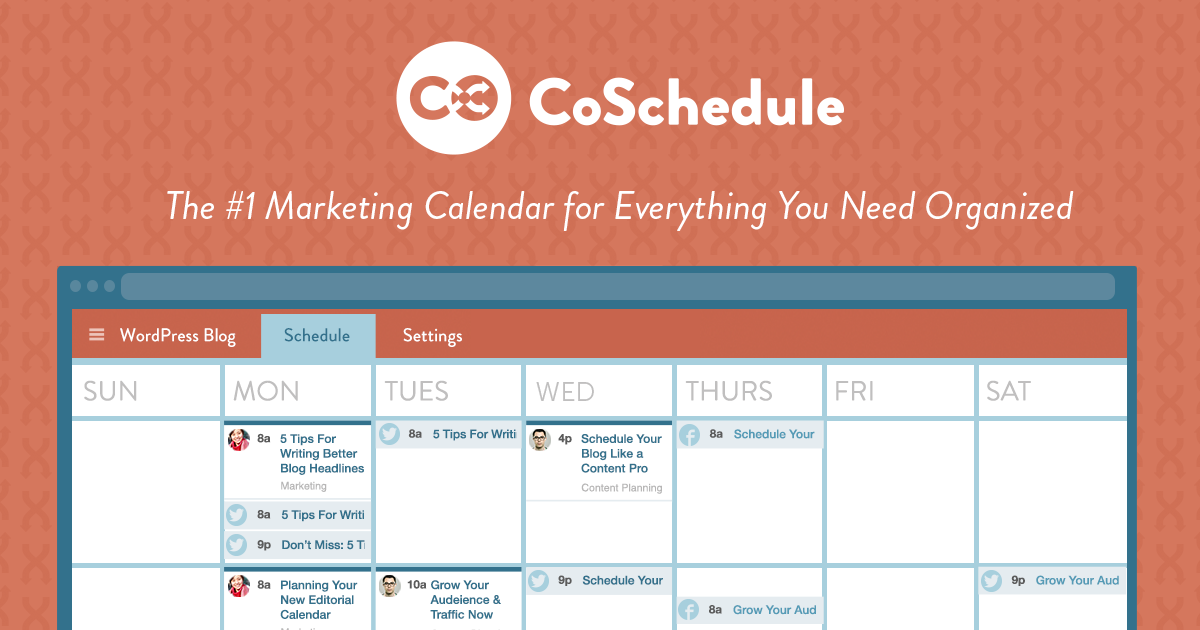
Use CoSchedule to plan your daily tasks and queue your ideas.
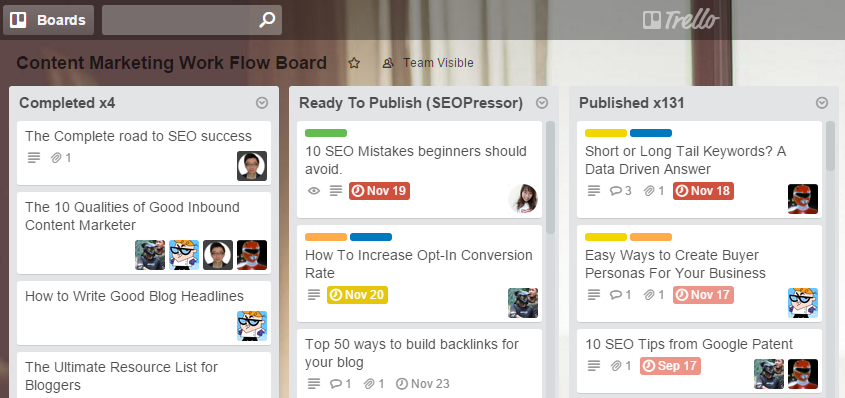
Use Trello to create a checklist using the points on this list (and a separate one for creating a brief).
These will keep you on track and remind you what to do next. Think of it like blinkers on a race horse – they keep you pointing your attention only where it needs to be: right in front of you.
Now, everything I’ve talked about has to do with planning a single post. If you want to plan a whole suite of content longitudinally (and I’d recommend you do!) then check out Azfar’s article on the top-down approach to content planning.
If you’ve tried everything here and you haven’t managed to improve your traffic, then it’s very likely to do with your tone and approach. Fortunately, we have an answer for producing effective content for your website, too.
Have any questions? Drop them in the comments section below. Have a different system for planning your blog posts and content marketing best practices? Share it with us! We’re all seeking the same thing, and there’s plenty of food at the online marketing table. Let’s get together, share ideas, and get better together.
[This blog post was first written and published by Joanne on Dec 20, 2016. It is most recently updated by Howard on Jun 3, 2020]
Updated: 24 December 2025


Save thousands of dollars (it’s 100x cheaper)

Zero risk of Google penalty (it’s Google-approved)

Boost your rankings (proven by case studies)
Rank High With This Link Strategy
Precise, Simplified, Fast Internal Linking.
